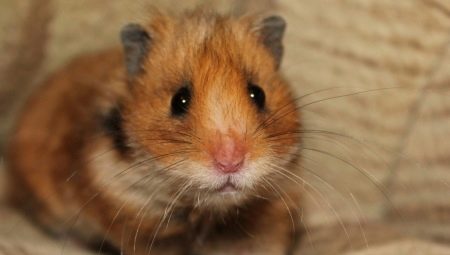Hamsters are one of the most popular pets in Russian families. They are unpretentious to feeding, friendly and do not need any special conditions of detention. In this article we will try to tell all the most interesting about hamsters.
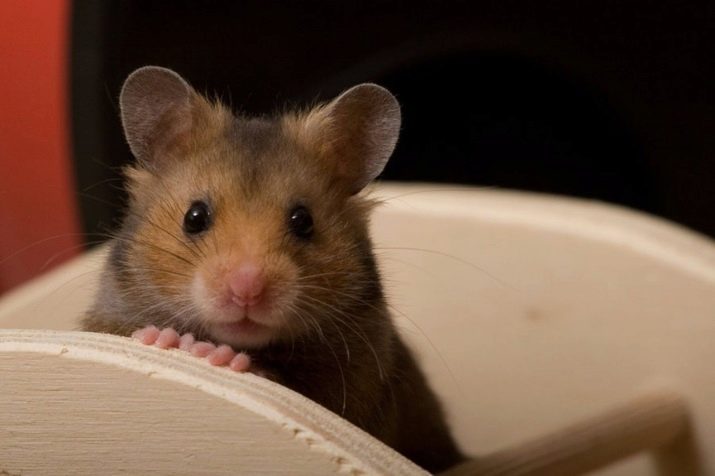
Who are they?
In simple terms, hamsters are animals of the subfamily of rodents of the hamster family. They differ from their close relatives of mice by their small physique, short tail process, small and rounded ears, and cheek pouches, in which individuals of this species store and carry food.
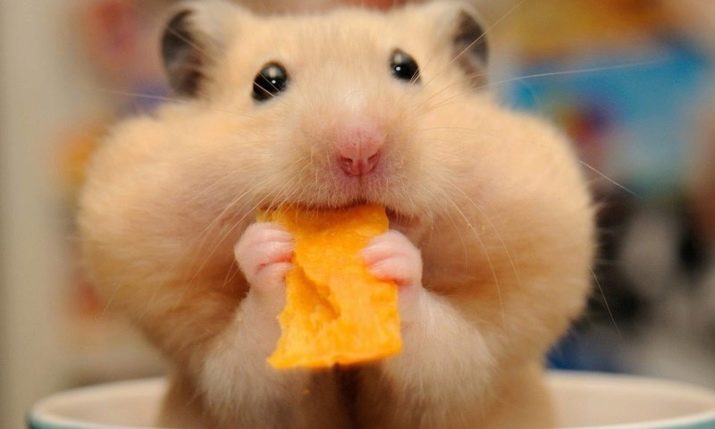
The external characteristics of hamsters can vary significantly depending on the variety. Sample description: body length from 5 to 30 centimeters, weight from 30 to 500 grams. The color due to selection studies is also diverse - from solid white, blue, black and red shades to brown flowers with an original pattern on the back or chest.
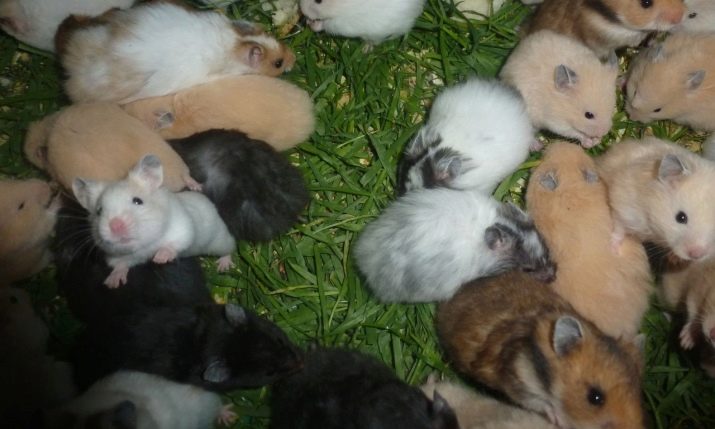
In the natural environment, representatives of this breed can be found in many regions of Eurasia, China and Korea. These animals live mainly in open spaces of steppes and deserts.
Unlike their relatives, some types of hamsters can be trained and trained. In addition, like many other types of animals, hamsters are able to hibernate during periods of cold and lack of food.

How many years live?
We all wonder how long our pet can stay with us.Some of them are able to be with us for life - dogs, cats, parrots, turtles. Others will not live with us for 5 years, but they will remain in our memory good faithful friends.
As for the hamsters, then even in the best conditions of care and nutrition, they rarely live longer than three years. If the pet is kept in poor home conditions or does not eat properly, this period can be reduced to several months. The organism of domestic hamsters is so weak that the most trifling allergy or a cold can end in a real death.

In rare cases, these animals can live up to 5 years, but this is rather an exception to the rule, which is hereditary.
Particularly interested in the lifespan of a hamster are inexperienced owners. And here, short life expectancy is more a plus than a minus.
- In a short period of time, the owners will be able to get used to the animal, gain practice on care and feeding, so that the education of the following individuals passed without problems.
- As a rule, for several years the animal does not have time to bother the owner, therefore, the risk of being thrown out into the street is small. In an inexperienced owner, the animal at best will live no more than 2.5 years.
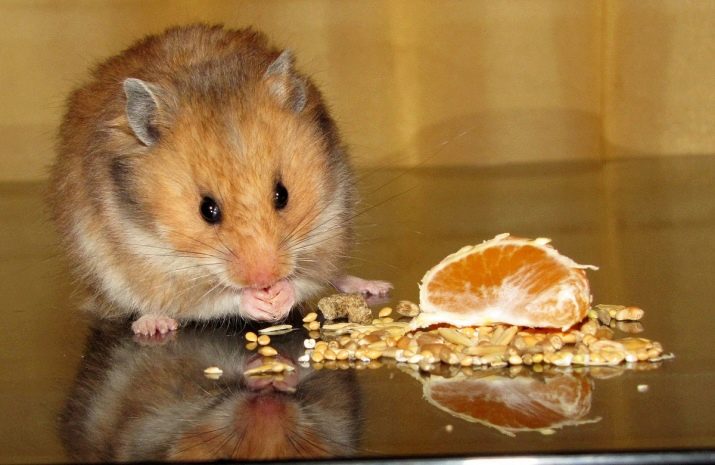
Factors affecting life expectancy.
- Main condition - The correct and balanced diet. This is both dry feed, hay and fruit, as well as vitamin and mineral food supplements that strengthen the body of the animal. To make an approximate diet for your animal, you should seek help from a veterinarian or zoologist.


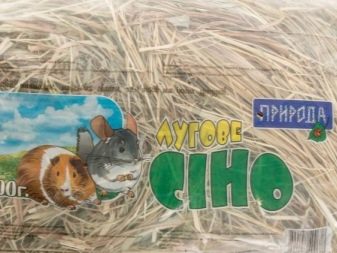
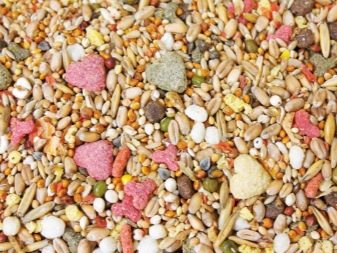
- The second important condition is quality conditions of detention. First of all, it is housing or a cage. It should be a metal or glass container with a good flow of air. The material of the cage should be quite strong so that the animal could not spoil it or be poisoned by it - so immediately cross out the wooden or polymer options.

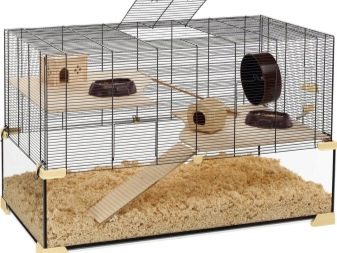
- When choosing a filler in a cage, make sure that the animal is not allergic to it. The best filler is good hay or soft straw. Dirty hay should be removed immediately to avoid rotting, the same goes for cleaning the entire cage. After feeding, try to immediately remove products from it that could soon go bad.
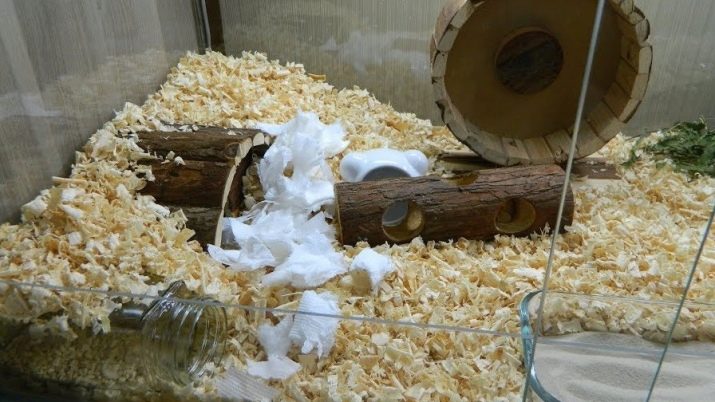
- Socialization and communication. It is hard to call hamsters those animals that are difficult to do without human attention, but they still require their share of communication. In an open nature, these animals often intersect with their own kind, and are even prone to a group lifestyle. Without company, some types of hamsters can develop depression, so raising a pair of hamsters is the best option. So they will be less bored in solitude.

Just make sure that hamsters do not conflict with each other when populating individuals in one cage.
As for wildlife, here hamsters have even less chance of reaching venerable age. Their whole life consists in constant movement - speed allows not only to quickly find food, but also to hide from dangerous predators (badgers, kites, buzzards). By the age of two, vision of these animals gradually sets, the reaction worsens, which leads to quick death from the claws and claws of other animals.
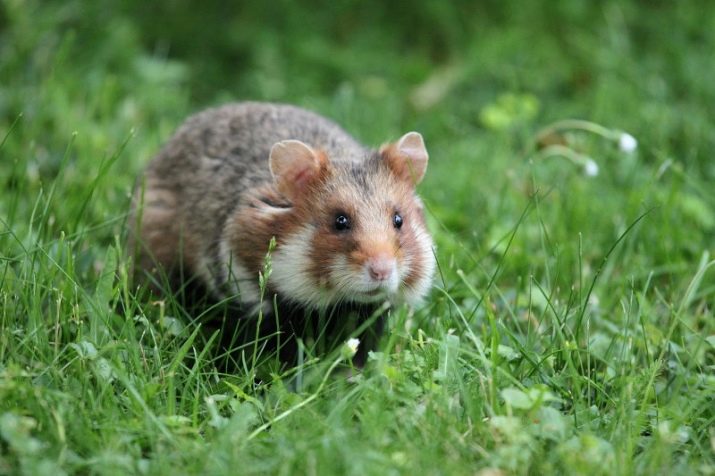
These are entertaining, very active, but not particularly kind and social animals. Unlike Syrian hamsters, this species is rarely given in hands, often bites and slips out with its incredible acrobatic abilities. It should be kept in a high closed cage or aquarium, otherwise it may just escape.
Kinds
All species of hamsters can be divided according to their area - some of the species live only at home, or have been specially bred for this, while other species live in the natural environment and are poorly adapted for training: field, ordinary, forest, Thomas, swamp. Below will be considered just domestic breeds.
Syrian Golden or Front Asian Hamster
It is the most popular breed bred at home. The birthplace of this species is considered to be the Syrian desert, where it was first discovered in 1839, after which any information about the variety was lost.
Only after almost 100 years - in 1930, several individuals were again caught on the territory of Syria, which became the ancestors of the species that we know now. In 1939, the species was officially announced as a new breed, which led to the widespread distribution of these hamsters around the world.
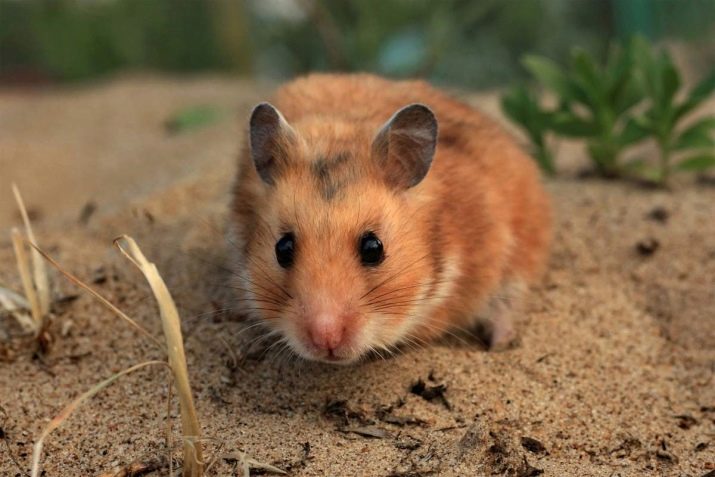
All families immediately fell in love with the Syrian hamster - it was easy to care for, it did not require much food and food, it was resistant to heat and almost never hurt.
The external characteristics of such a hamster are quite standard: length is not more than 15 cm, weight rarely exceeds 250 grams, the tail is small, almost invisible behind the hairline, the color of purebred breeds is golden-white, with a shimmer, the coat is short and smooth, in some individuals fluffy. Eye color is usually black or brown, however, individuals with pink and reddish irises are found.
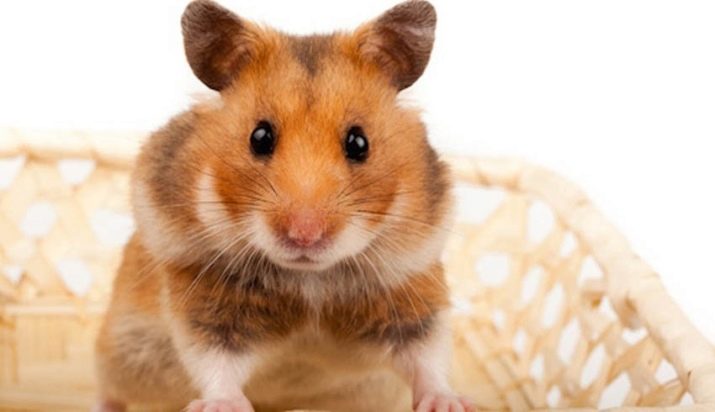
Roborovsky Hamster
This variety refers to the dwarf type: the body rarely reaches a length of more than 5 centimeters, the tail is almost imperceptible. The color, like that of a Syrian hamster, is golden (back, withers and ears) and white (breast and limbs). A distinctive feature of the species are the characteristic white superciliary arches. Inhabits the species in some regions of China and Mongolia, prefers an open area with a moderate level of humidity.
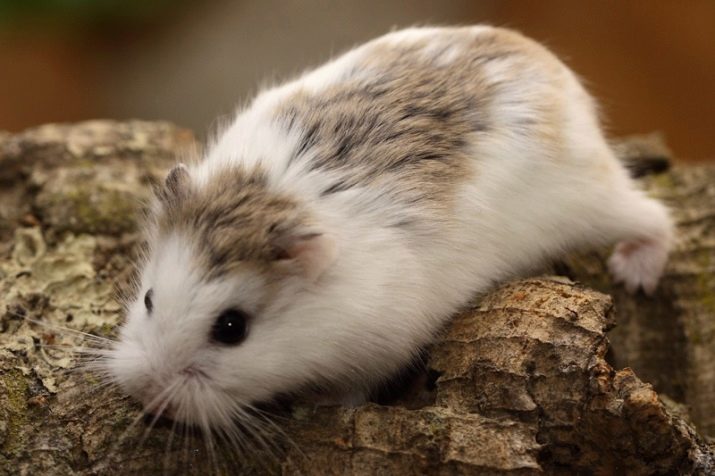
If Roborovsky’s hamsters are not particularly friendly to people, then they treat their fellow tribesmen well — these hamsters can and should be raised either in pairs or in a small group.
Dzungarian hamster
It is also one of the most popular varieties among domesticated species. They differ in not particularly long body length - up to 7-10 centimeters, mainly in gray or whitish color, as well as a characteristic black or dark strip from the head to the tail itself (on the top of the head it forms a characteristic dark cross or rhombus).
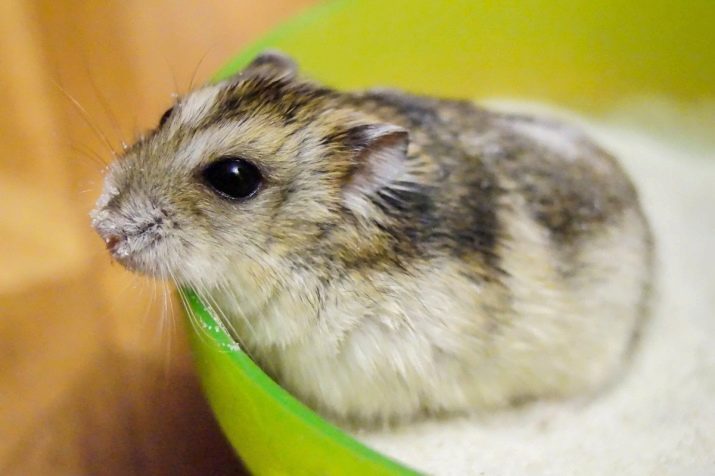
At the moment, there are varieties of Dzhungar hamsters bluish and even brown. The breed is popular due to its friendly and calm nature, as well as unpretentiousness to food.
As for leaving, then everything is much more complicated. Without daily haying and replacing hay, animal excrement can produce an extremely unpleasant odor, which can be difficult even for experienced breeders to deal with.
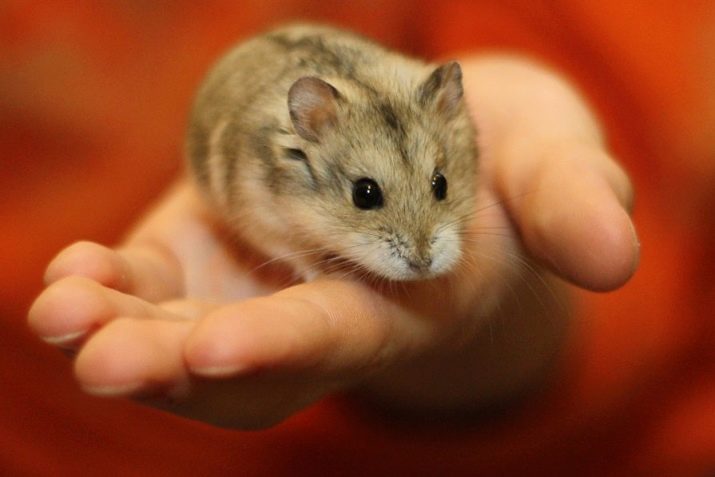
Campbell hamster
A species of dwarf hamsters discovered at the beginning of the 20th century near the Russian-Chinese border. They look like a Dzungarian breed because of the similar color and strip along the body (although there are Campbell hamsters without this strip), but the latter has a thinner one and has fuzzy borders. The color is most often golden or amber, brownish shades are possible. Not longevity - the most healthy individuals rarely live up to 2.5 years. In addition to everything described, the individual does not change the coat for the winter.
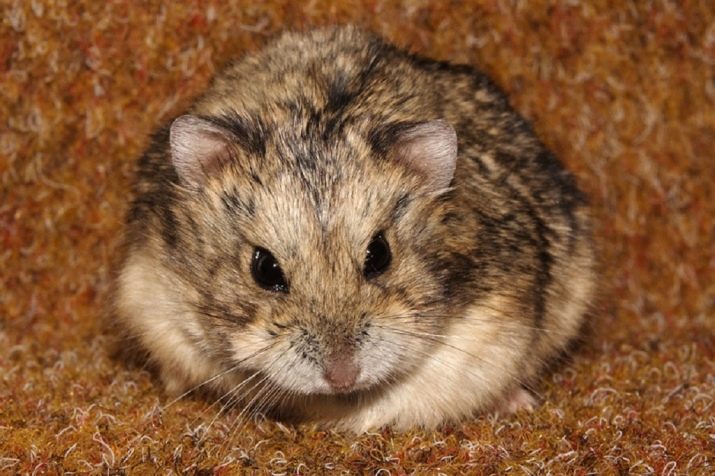
By type species, it is one of the smallest representatives of its species. - growth is rarely more than 10 centimeters, and the weight is even tiny - up to 50-60 grams. By nature, the breed is not particularly social, rarely goes hand in hand, can bite. Despite the unstable nature, he does not need special care, he does not need too much space or food for reception, which is why he is also widely loved by Russian breeders.
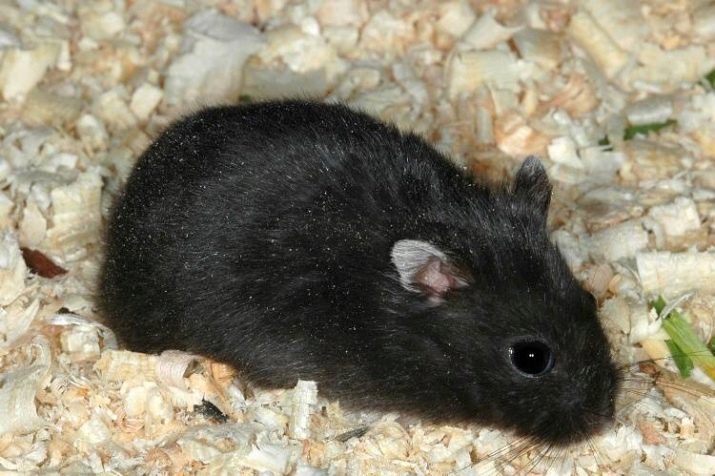
What do they eat?
The diet of hamsters varies depending on the habitat. Below you can find an approximate list of products that are more or less useful for these animals.
In the wild
The natural environment has given hamsters an excellent appetite for many crops, primarily legumes and cereals.In the period, due to lack of food, animals switch to shoots of plants and vegetables. They like bamboo shoots very much; they prefer potatoes, carrots and beets from vegetables, which is why in some regions they are considered real pests. During periods of hunger, they do not disdain eating small creatures: insects, worms, some species can hunt snakes and frogs.
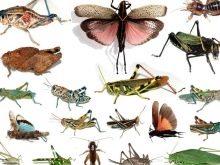


If we talk about species preferences, webbed hamsters are very fond of mollusks and crustaceans, dormouse hamsters prefer fatty vegetables and fruits, rice hamsters love to feed on fish or its leftovers from meals of other animals.
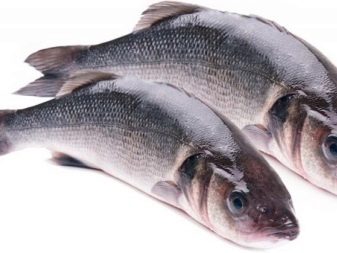
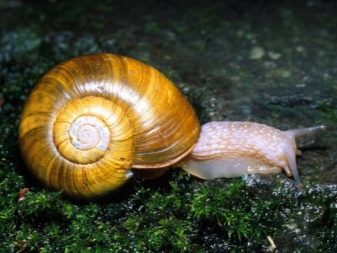
Captive
Even an amateur can cope with feeding a hamster. As a rule, you don’t need to select any specific diet here - all the vitamins and cereals necessary for the development of large quantities are contained in special feeds for rodents. Using this type of balanced feed is much simpler and cheaper than making it yourself. On the packaging of such a feed, it is most often already indicated with what regularity and in what doses it should be served.
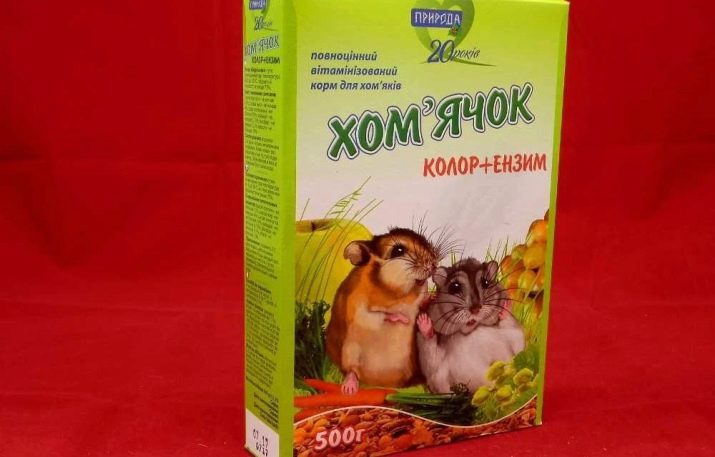
If you want to pamper your pet, then in the diet in limited quantities it is worth introducing some vegetables: carrots, beets, lettuce, meadow grass, zucchini. Do not overdo it with doses of natural plant products, the main part of the diet should be dry food and hay.
Keep in mind that hamsters rarely immediately eat the food they eat, they prefer to accumulate food in their cheek pouches in the daytime, and they absorb it at night. That is why, even after eating, do not immediately clean up the food.
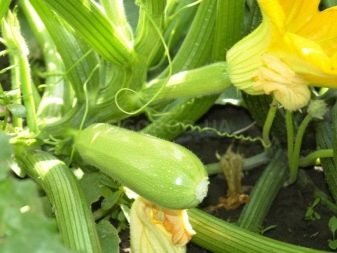

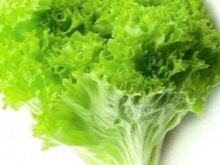


Hamsters tend to accumulate food, so some products may be left in reserve.
If we reduce all the conditions for feeding hamsters to a small list, we get the following.
- Always fresh and healthy food, no elements of ordinary human food.
- Permanent access to clean water in the cage, provide it with removable feeders, convenient for you.
- Hay should always be in the cage, both as food and as bedding.
- Treats should not make up a large part of the diet, the animal should not get used to them.
- Do not abruptly change the diet. Add another product, gradually increasing its dose in the diet.
- Create a plan with a clear feed time for the animal. It will be better if your rodent can get used to a certain feeding time.
- Remove untouched fruits and vegetables from the cage immediately to avoid rotting. Leave dry food for a while.
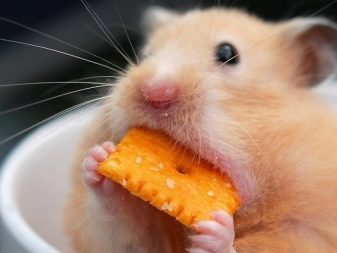
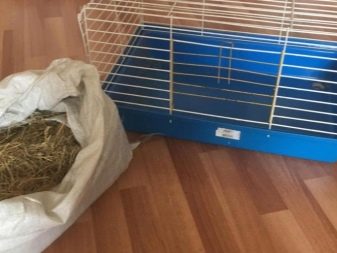

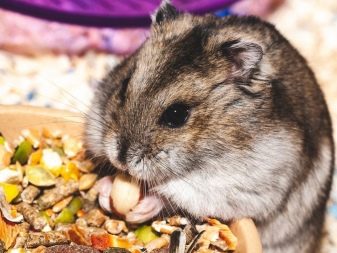
It is strictly forbidden to give: all products containing salt and sugar, onions, garlic, citrus fruits, almonds, watermelon and mint.
Care Rules
Below you can find general rules for the maintenance and care of hamsters.
- House or dwelling - a spacious and durable cage with a retractable bottom, good air circulation. The place for the cage, shelving or display case should be well lit and insulated, but should not be in direct sunlight or drafts.
- Food - Regular, fresh, every day at a specific time. Leave dry food until the animal picks up, pick up fruits and vegetables immediately after feeding from the cage. Most of the diet is dry food, not vegetables.
- Restroom. Try to clean up garbage and excrement as often as possible. It makes no sense to make a separate place for the toilet; these animals rarely have a sense of cleanliness and they are able to spoil where they want.
- Entertainment. Be sure to place several toys, hammocks and tunnels in the cage where animals can play, spend time actively or just sleep.
- Carrying. Animals do not tolerate a sharp change of place, and therefore, try to artificially create the conditions in the new place that were on the old one. This is especially true for newly purchased individuals.

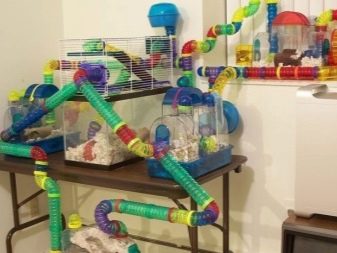
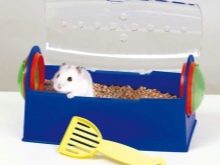
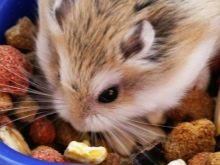
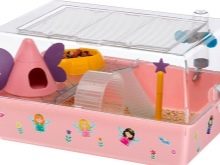
How to determine the gender?
Sex determination is important not only when choosing a name for an animal, but also if you want to contain several animals at once (whether you want to breed them or not). To determine the age of the animal, you should first reassure him. To keep the animal relaxed avoid sudden movements, you can give him some treat to distract attention from the inspection. To make it easier to see, slightly raise the animal by the fold of skin between the shoulder blades on the back.
In males, you will immediately notice the genitals, in females you can find nipples in the chest and abdomen. Judging by the feedback from inexperienced owners, it is sometimes difficult to determine the sexual characteristics due to the hairline, in this case you should not pull the skin very much, just moisten the animal’s hair slightly with warm water in the chest area and you can clearly see the genitals. If the animals are very young or newborns, then the sex can be determined by the distance between the anal and urinary openings.
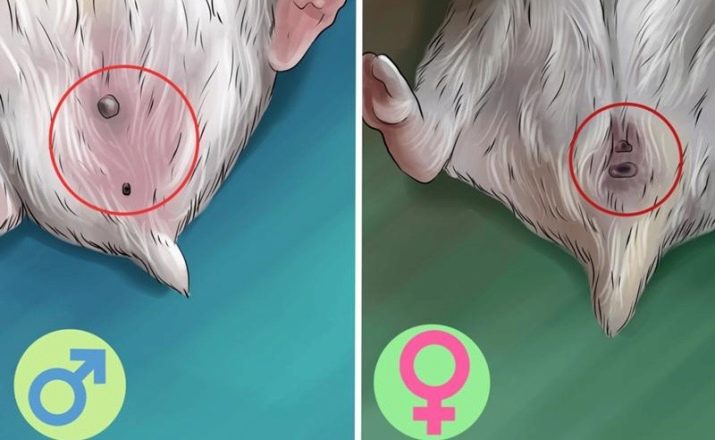
In girls they are located close to each other, in boys they are slightly distant.
Propagation Features
In hamsters of any kind, the maturity period begins quite early - in some cases already after reaching a month of age. If breeding is not mandatory or urgent for you, it is recommended to wait up to 5 months. It is at this age that hamsters reach full puberty.
For mating, you should choose active and strong males, as well as healthy and energetic females. The mating itself should occur on neutral territory for each individual, only in this case it will not bring discomfort to the individuals. Mating time is better to bring in the evening. It is in the evening that the animal's energy increases, as does sexual activity.
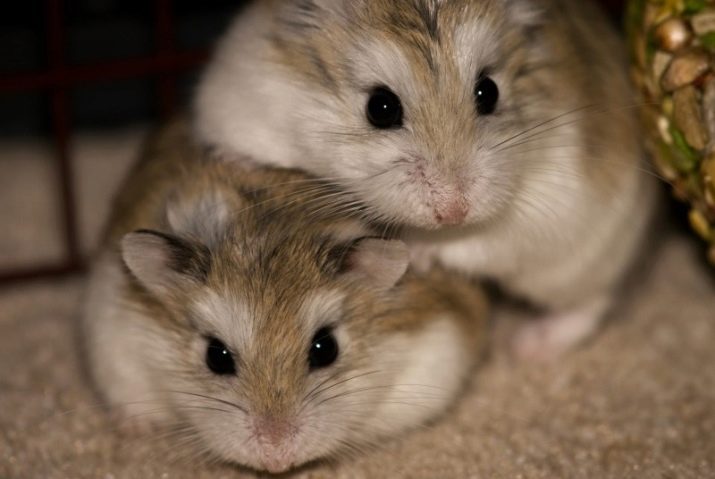
If pairing was successful, after a week you will begin to notice the characteristic signs of pregnancy: swelling of the nipples, weight gain, decreased activity, the need for more water and food, possibly irritation in the female. Approximately 3-4 weeks after mating, cubs are born, in the litter they can be from 1 to 15 and even 18 - depending on the variety.
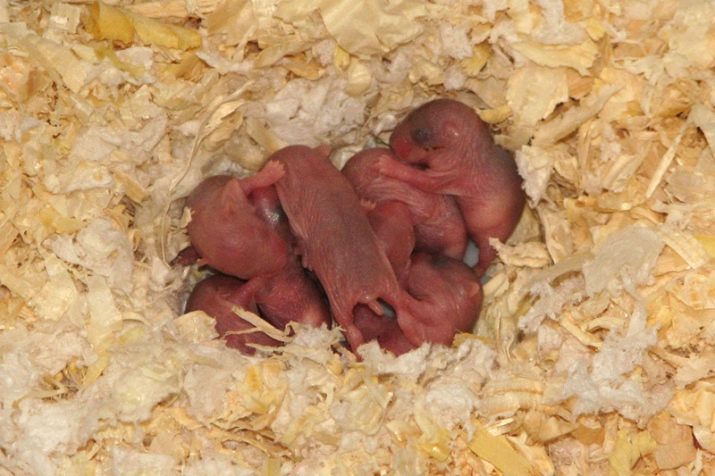
During the year, the average female is able to bring litter up to 3-4 times, these animals are extremely fertile.
In order to preserve the young, one should immediately put the male in another cage immediately after birth, otherwise he may simply eat young individuals. The female should be treated with extreme caution during feeding and rearing. Try not to annoy the animal with games and entertainment, at this time the female needs more peace and a large amount of vitamins. Cubs can be moved to another cage after reaching one month.
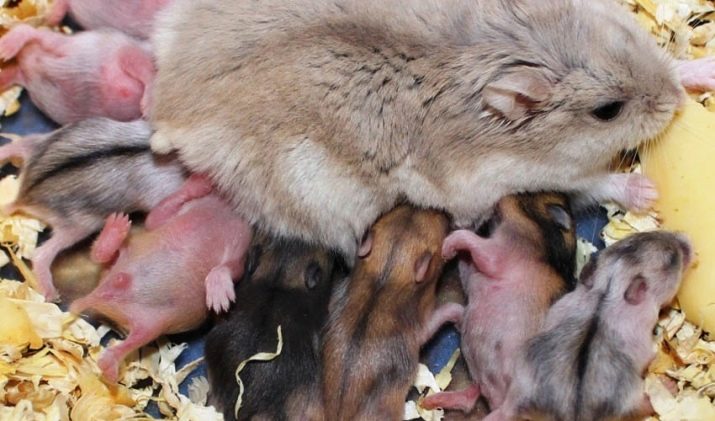
Diseases and their prevention
Unfortunately, all types of hamsters are extremely unstable to many colds and infectious diseases. Some of these diseases extremely weaken the body of the animal, which may ultimately lead to his death. Including a certain part of the disease will be caused by improper conditions of detention, and not by the breed features of the species.

Remember that the best medicine for your pet will be a timely visit to an experienced veterinarian, avoid self-medication.
We list the most common ailments of hamsters.
- Obesity. A common disease among all pets. The reasons are irregular and plentiful feeding together with an inactive lifestyle. That is why keeping hamsters requires a lot of free space for games and entertainment. In their natural habitat, these animals spend about 90% of their active life in relentless movement. Obesity can become the basis for the development of many cardiovascular diseases.
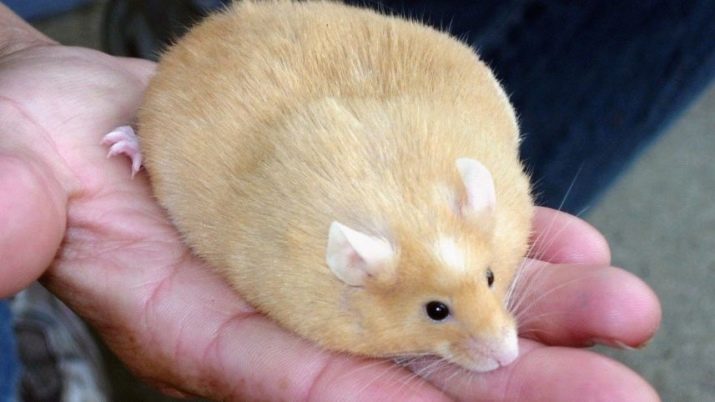
- Abscesses on the extremities. A disease resulting from high activity and malnutrition of the animal.To cope with the symptoms, you should regularly smear the wounds and abscesses on the legs with zinc ointment or fish oil. Healing will not take place immediately, in some cases you will have to wait up to six months.
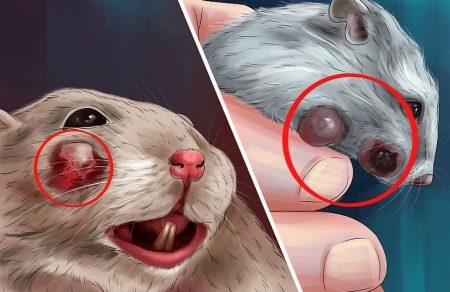
- Enlarged or curved incisors. Half of the animal's diet should be solid food, which will grind and shape the teeth of the animal. This is especially important for still young individuals, in which the teeth have just begun to form. Symptoms of the disease are excessive salivation, as well as leaking mouth closure. It is impossible to shorten teeth at home, the chance is great to harm the animal even more.
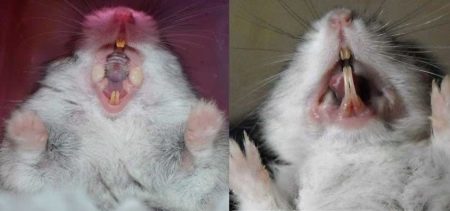
- E. coli. The main danger for any type of hamster is precisely gastrointestinal diseases. Symptoms of a stick are fever, as well as diarrhea with blood. The animal, as a rule, does not survive in this case. The disease occurs due to a sharp change in diet, as well as due to poor living conditions - dirt, unwashed cell, expired food, dirty water.
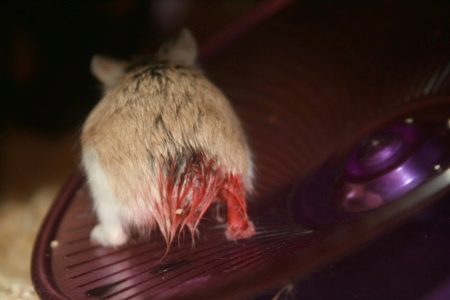
- Colds. The disease proceeds with similar symptoms as in a person: a cough, runny nose, sneezing, discharge from the eyes appear. You should fill the diet with plenty of fresh vegetables and fruits, and also provide your pet with a dry and warm corner without drafts and cold.
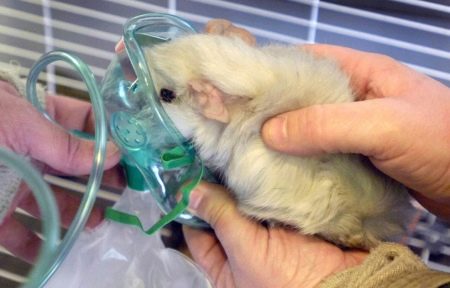
- Cystitis. The disease occurs with a lack of vitamins, as well as content in conditions of dampness and cold. Symptoms are frequent urination, lack of appetite, and external arousal. Most often in this case, sulfonamides and Buscopan help, but if the treatment does not help, it is worth taking an x-ray. It is possible that your animal has stones in the bladder.

- False rabies or, in other words, Aujeszky’s disease. In this case, the nervous system of a pet is attacked by a certain virus. The first symptoms begin to appear within a week - the animal behaves uneasily, itches, squeaks. If the disease is detected at this stage, then it is still possible to prevent it. At the final stage, the vocal cords completely lose activity in the animal, and oral paralysis occurs. Then death comes almost immediately.
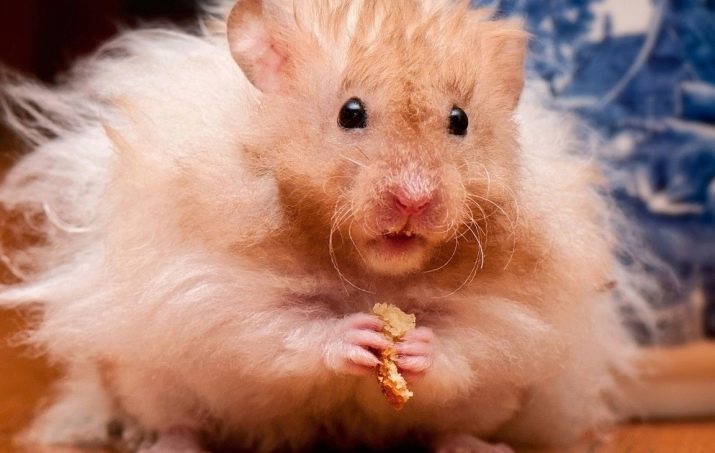
- Skin diseases: abscesses, peeling, itching, abscesses, abscesses, hair loss. These diseases can be caused both by infection, and parasites, malnutrition.
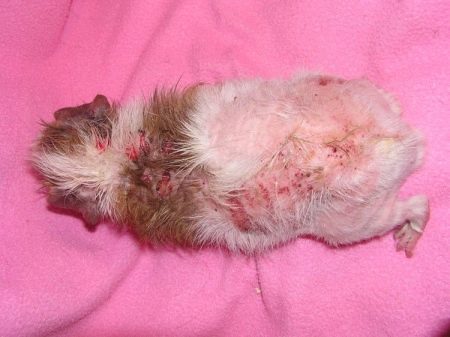
This is not all diseases in hamsters. To more accurately determine the diagnosis of your pet, do not be too lazy to contact your veterinarian as soon as possible.
Interesting Facts
It is worth considering a list of the 15 most interesting and fun facts about hamsters that have been compiled for you from around the world. Some of the information from the facts applies only to some varieties of these animals.
- The largest hamster breed in the world is the European hamster. Representatives of this breed can grow up to 35 centimeters in length.
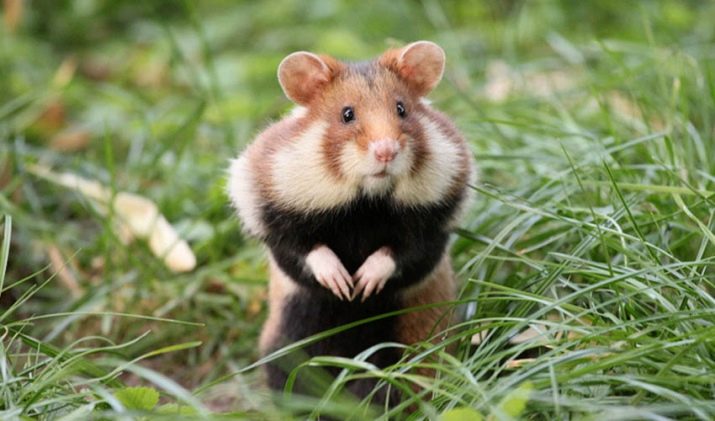
- The smallest variety is considered a dwarf hamster. Its length rarely exceeds 10 centimeters.
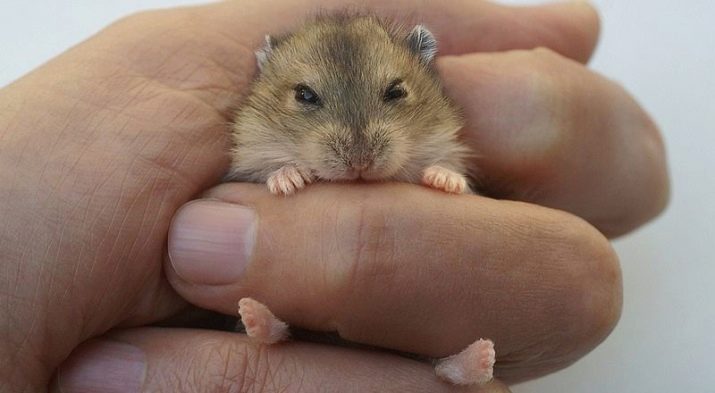
- The main activity of hamsters occurs at night and at dusk. In the afternoon, they prefer only to accumulate food or play.
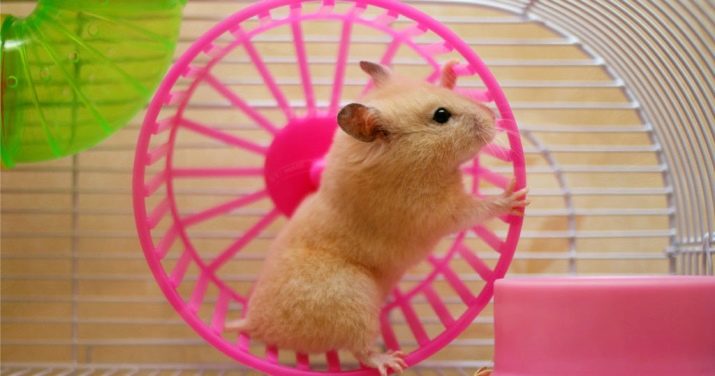
- Hamsters are considered omnivorous animals, as they are able to digest not only plant, but also animal food.
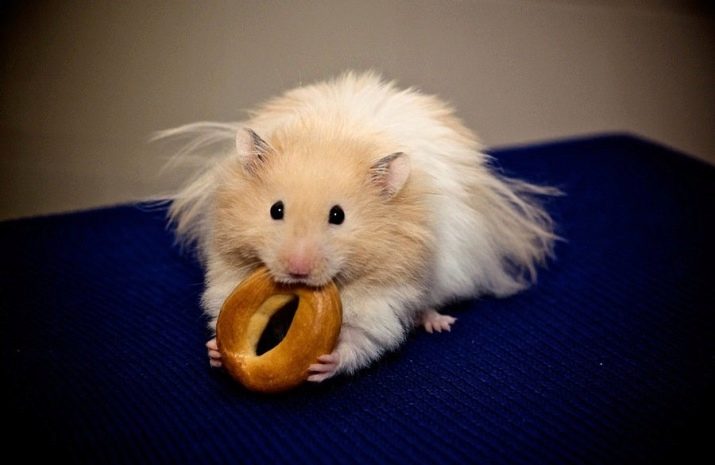
- The buccal sinuses of hamsters serve not only for dragging food (up to 30% of the animal’s weight), but also for successful swimming. The animal is gaining air in the cheeks, which allows it to stay afloat freely.
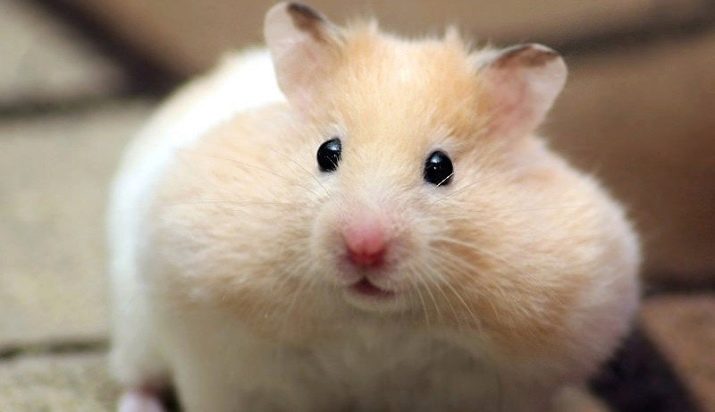
- The color of hamsters can be completely different, some researchers count up to 40 separate colors, including white, red and black shades.
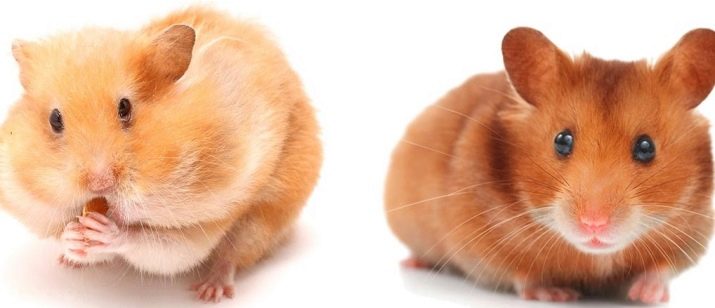
- The most common 4 breeds of hamsters: Syrian golden, Dzungarian, Campbell hamster and Roborovsky hamster. The most bred is considered the Syrian golden variety. It is they who can most often be found at home.
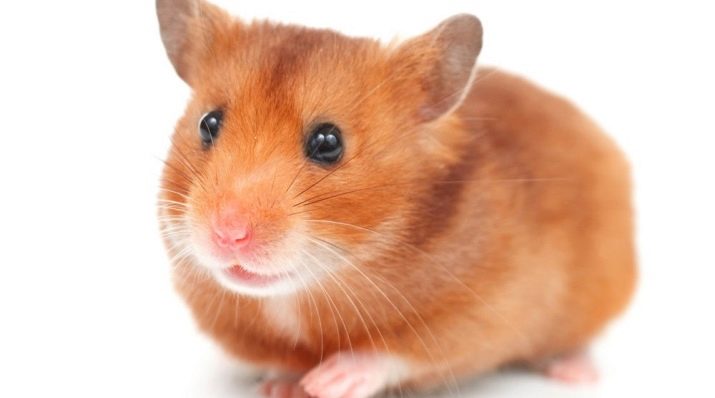
- Some species of hamsters are actually on the verge of destruction, while other species are considered by some countries to be real pests, from which whole hectares of vegetable crops (especially legumes) are affected. The most rare species of hamsters are the Syrian hamster and Newton's hamster.
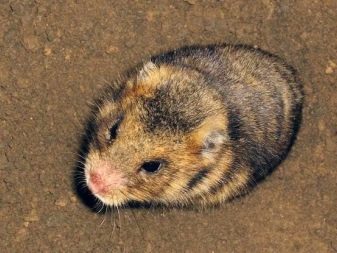
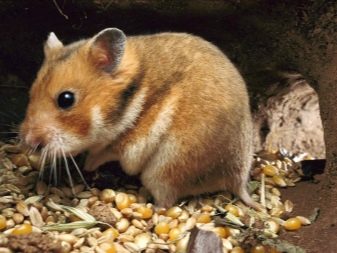
- Most species of hamsters do not have good eyesight, in addition to this, these animals are color blind. However, the smell and hearing of hamsters is developed just fine, which helps to quickly find food in the natural environment.
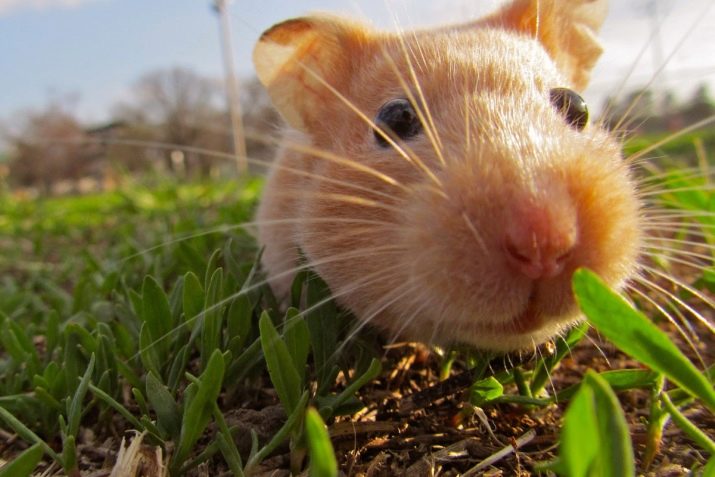
- The average life expectancy of hamsters is 1.5-2 years. Moreover, 1 year of existence for this animal is actually equal to 25 years of human life.
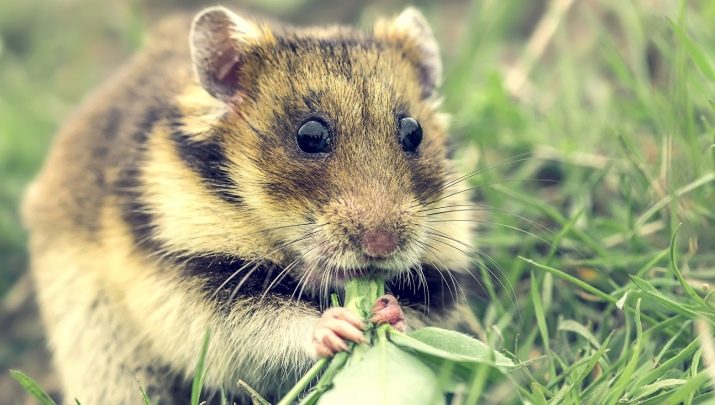
- The word hamster is translated from the Old Testament language as "an enemy who throws down." Researchers believe that this was due to the habit of animals to bend plants under themselves to get to food or the fetus.

- Hamsters, like squirrels, always store a lot more food than they can eat. It is worthwhile to be ready to detect a whole warehouse from the feed, if you have not thoroughly cleaned the cage for a long time.
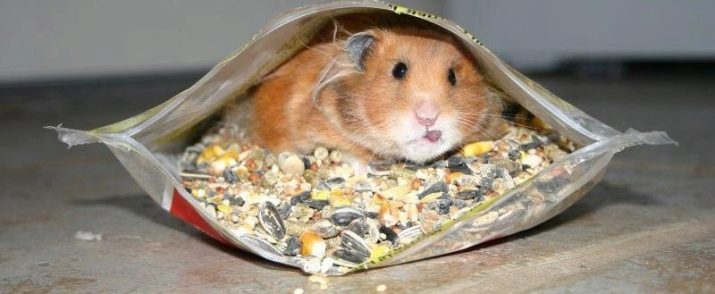
- In some countries, for example, in Vietnam, at the official level it is forbidden to keep hamsters at home. These animals are considered not so much pests as carriers of deadly diseases. For non-compliance with this law, a round fine of approximately $ 800 is due.
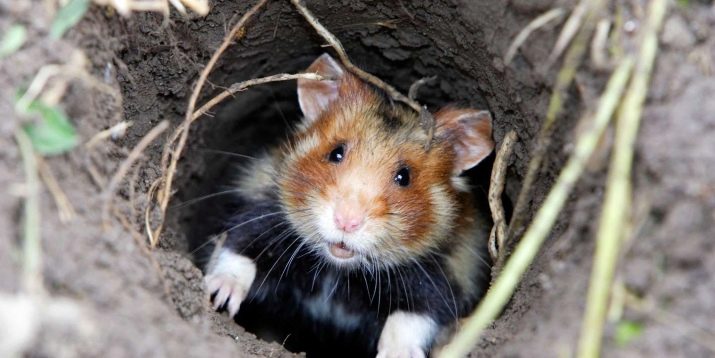
- Strange as it may seem, hamsters are a rare breed of animals that are born already with incisors, which continue to grow throughout life.
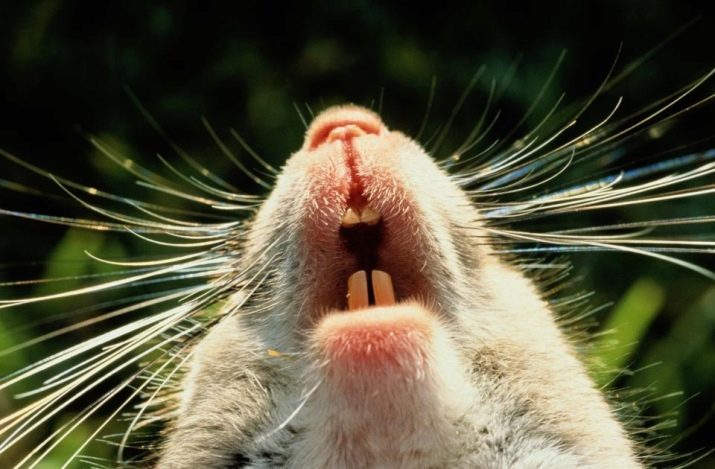
- Dwarf, as well as some other varieties of hamsters are able to slightly postpone the birth of young animals, if at the same time a female from an earlier litter is raised by a female.
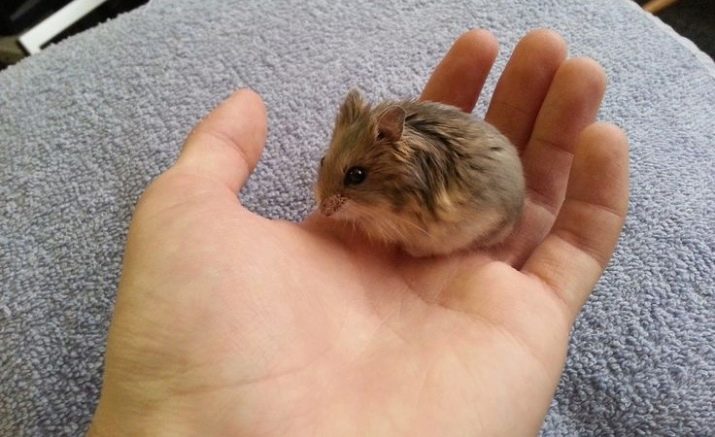
About what you need to know when buying a hamster, see the video below.
